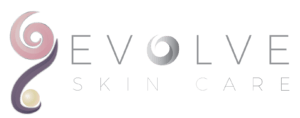Despite the continued popularity of the traditional peeling agents, a number of newer peeling agents are being explored for various pigmentary dyschromias including melasma. One agent which deserves mention is the phytic acid peel. An important drawback associated with the application of alpha hydroxyl peels on the skin is the need for neutralisation and defining the exact time of neutralisation. If the peel is neutralised too quickly, it fails to produce the desired effects; whereas, if the neutralisation is delayed, it might lead to unwanted sideeffects. An easy solution to this problem is the phytic peel. It is an alpha hydroxy peel with a low pH for efficiency; it also does not need neutralisation, and therefore the danger of overpeeling is avoided.[44] The peel allows progressive and sequential actuation of its acid in a non-aggressive manner. Hence, the typical burning sensation seen with the glycolic peel is not observed with the phytic acid peels. The peel solution is left on the face until the following morning, unlike the traditional alphahydroxy peels which require immediate neutralisation. Generally, phytic acid peels are applied once a week but can be repeated twice a week when a more stimulative effect is required. Five to six peel sessions are required to achieve lightening. Although there are no published studies with the agent, in our experience the phytic peel is a very safe and effective agent for treating melasma in dark skin, and definitely needs further evaluation.
Another agent is the Obagi blue peel. It is composed of a fixed concentration of TCA with the blue peel base (containing glycerine, saponins and a nonionic blue colour base). A reduction in the surface tension of TCA, water and glycerine occurs which ensures a slow and more uniform penetration of TCA.[45] In a study of 18 Korean women, the Obagi blue peel was compared with a single sitting of 1550 nm erbiumfibre laser, and significant improvement was observed in the melasma lesions after four weeks of therapy with no difference between the laser- and peel-treated sides.[33]
A recent addition to the list of chemical peels is the amino fruit acid peels. They are potent antioxidants, and have been found to be effective as anti-ageing cosmeceuticals and act against photopigmentation.[46] In a recent study on light-skinned patients, the amino fruit acid peels were found to be as effective as the GA peels and better tolerated.[47] However, there are no studies on dark-skinned patients to substantiate this finding.
Follow Us On
Categories
